These days, it seems there’s a media niche for everything. Want to know how to care for a pet monitor lizard? Turn to Reptiles Magazine. Want firsthand advice about the nation’s best fast food chains? Listen to the Doughboys podcast. Want to watch people get pretend haircuts? Watch the Gibi ASMR YouTube channel.
It should be no surprise then, that there are a host of media outlets focused on the art-science nexus. Whether it’s visual art, poetry, music or dance, these sites connect the internet to the aesthetic side of science. The content they produce or curate ranges widely– from the work of budding sci-artists to features on art installations in major exhibits.
Explore this list to find a new fix for your SciArt bug, or to find inspiration for your own work. Enjoy!
1. In Layman’s Terms Literary Magazine
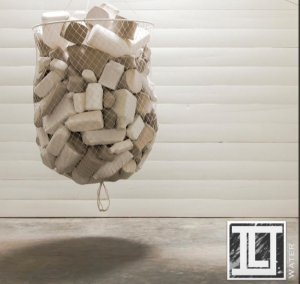
In Layman’s Terms is an online literary magazine “dedicated to encouraging a new appreciation of science, technology, and the natural world for the average person.” This biannual magazine publishes art, poetry and creative non-fiction that intersects in some way with science and the natural world (in full disclosure, I am also an Associate Editor for the publication). Founded by creative writers Brit Barnhouse and Beck Adelante in 2015, the magazine explores a new theme with every publication. The most recent theme, water, encouraged writers and artists so submit work that related to their memories and experiences with the liquid world. “Show us ice and steam and pressure. Teach us about ocean acidification and microplastics and especially, what can be done about them,” the call said, in part.
While ILT is still a small outlet, its focus on publishing lesser-known artists and lack of submission fees make it a great group to follow– especially for aspiring Sci-Artists looking to get their work published.
2. SciArt Magazine
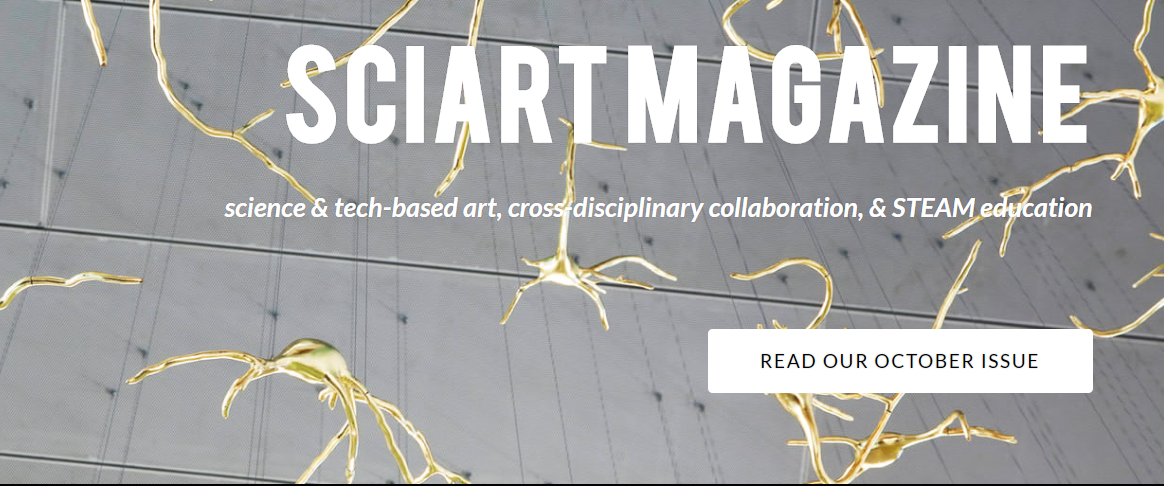
SciArt Magazine, brainchild of the SciArt initiative, is an international magazine dedicated to publishing “on the cutting edge of science- and technology-based art, third culture conversation, and STEAM education.” The magazine is run by an organization called the SciArt Initiative, a non-profit from New York that also organizes a twice-yearly art exhibit in Manhattan, monthly public events, and sponsors residencies and grant opportunities for aspiring “SciArtists.”
One recent interview feature explored the work of artist Yago de Quay, a Boston-based artist whose technology-inspired live performances have been performed around the world. Another explored artist Robert Rauschenberg’s work creating lithographs and collages relating to the 1969 mission to the moon.

Much of the work featured in SciArt is hidden behind paywall (though, it’s generous: just $50 gives you access to the publication for life). The art featured runs the gamut from sculpture and oil painting to videos and dance. The magazine does not yet have a print edition, which is a shame given how beautiful many of the images are. But with more subscribers to the digital version, maybe founder Joe Ferguson will be able to expand the platform! The Magazine also accepts submissions from freelances– both for featured art and for stories. This would, however, be a labor of love– the publication does not currently have the capacity to pay these freelancers.
3. Labocine
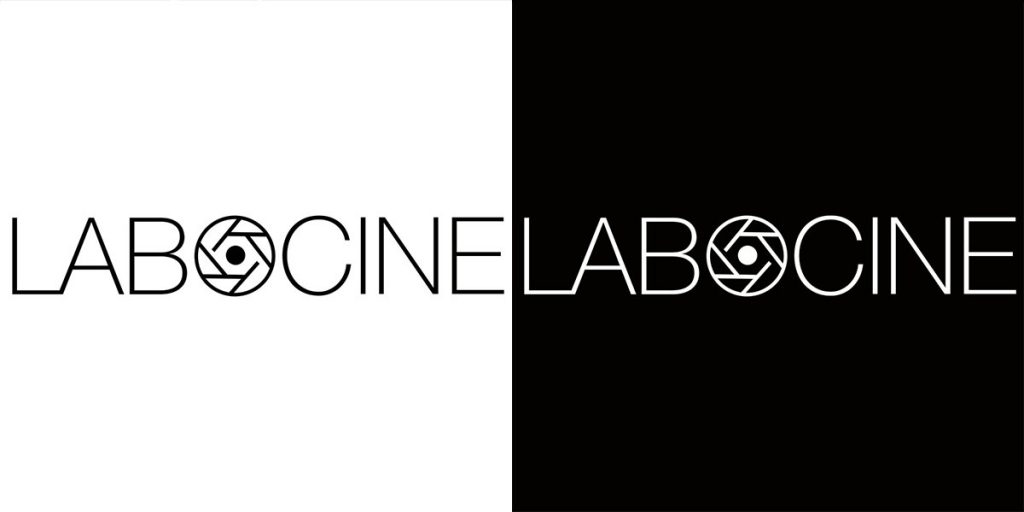
Labocine certainly wins the award for the most beautiful web presence on this list. This group specializes in short films that intersect with science and the content they put out is stupendous. The site is an initiative of the Imagine Science Film Festival, an annual science film event in New York City, that is meant to sustain interest in science films throughout the year. If you are interested in creative science movie-making, you HAVE to be keeping up with Labocine. The group accepts submissions of films from amateurs and professionals, and those selected by the editorial team will be featured on the site.
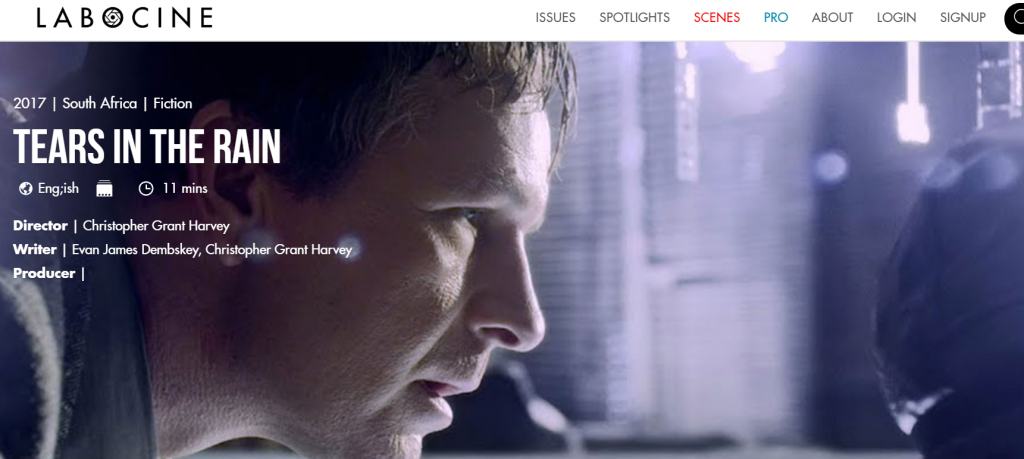
Like SciArt, much of the content on Labocine is hidden behind a paywall but the “Spotlights” section has well-written summaries of the films and does not require a subscription to view. Likewise, the “Scenes” section features short clips from their Science Video Archive that can be viewed for free. Every month, Labocine releases a new issue based around a specific theme. This month’s theme is inventions. Beyond the fascinating science video content, Labocine’s site is also a masterclass in good web design. The site is full of GIFs, dynamic icons, and satisfyingly intuitive functionality.
4. Nautilus: Poetry in Science
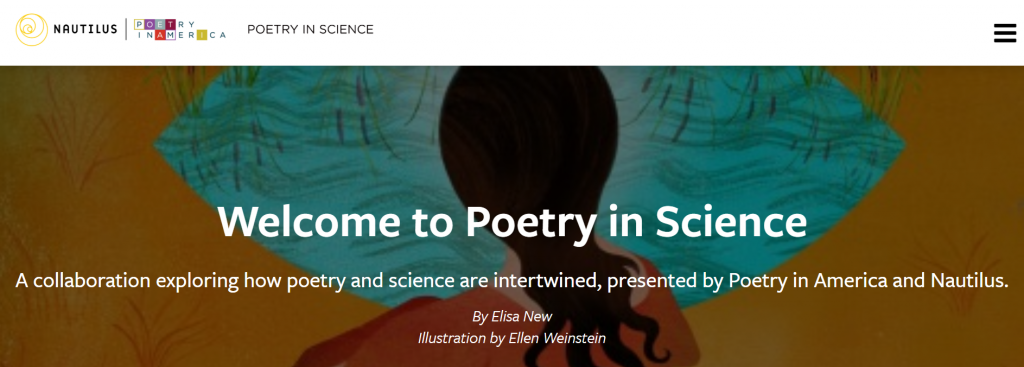
You may already be familiar with Nautilus, the beautiful science news magazine directed by John Steele that publishes on a single topic once a month, releasing a new “chapter” every week (the publication also gained some notoriety in 2017 for failing to pay freelancers–fair warning). But their crossover project “Poetry in Science” is something else entirely. The site is essentially a series of articles and interviews run by Harvard English Professor Elisa New. Professor New’s focus, not unlike that of Science Sonnets, is exploring the connections between science and the written word, particularly poetry. She and her team of contributors interviews scientists, poets, artists and celebrities about how the artistic world connects with the scientific world, and what happens when those worlds collide.
One recent post is an expose on the poem “The Gray Heron” by Galway Kinnell. Another explores Richard Dawkins’ views on Robert Frost. Every article on Poetry in Science is a treasure, and I’m not sure I’ve found another place on the internet so interested in the role of science in poetry.
The publication itself is a collaboration between Nautilus and Poetry in America, the PBS television series also hosted by Professor New. While all the poems featured in Poetry in Science are by professional poets, they do accept submissions from freelancers exploring these poems. If your interest in sci-art is focused squarely on the written word, check out Poetry in Science!
